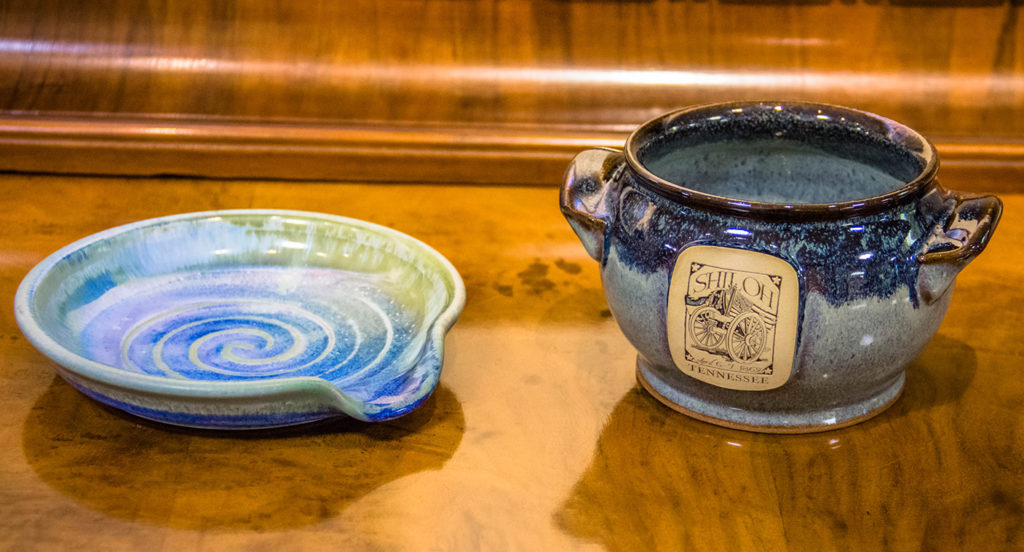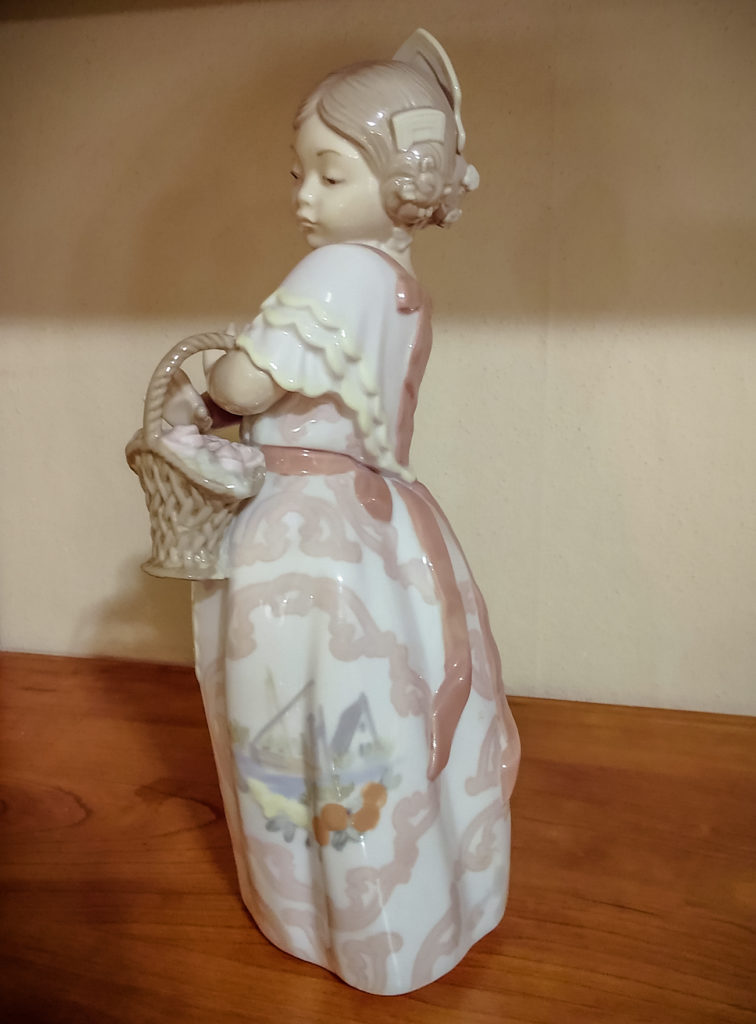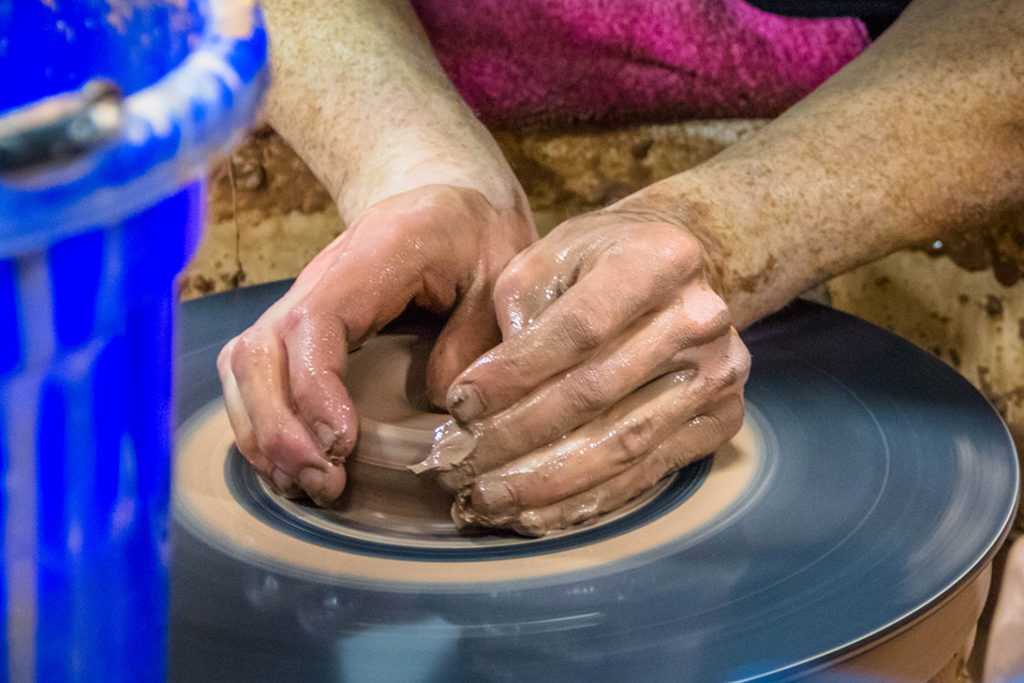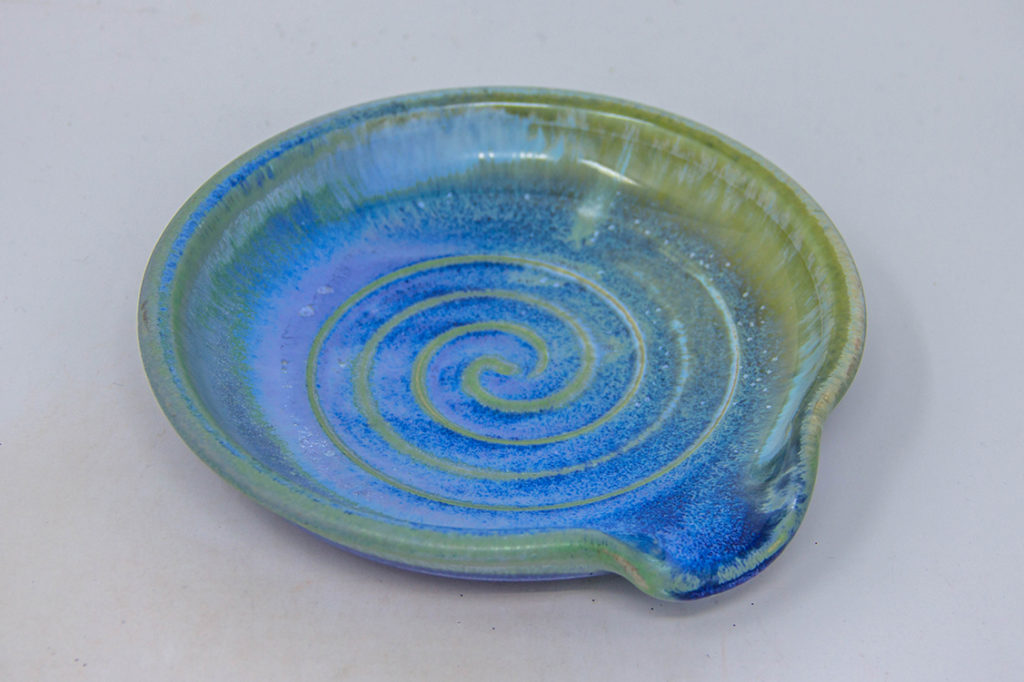
What’s the Difference Between Stoneware and Porcelain?
Even though stoneware is our specialty, our pottery experts also know a thing or two about porcelain. To help you make informed choices when you’re looking for your next mug, kitchenware piece or a new work of functional art, we’ve sorted out the differences between stoneware and porcelain. Find ways to tell the two apart and see the differences from a potter’s perspective below.

Materials
Like with most pottery, artisans use clay to make stoneware. In our case, we use naturally sourced clay to make our mugs and steins. Many potters prefer to work with this type of clay, whether they’re making functional art or pieces that are purely decorative. This is partly because it’s easy to throw compared to porcelain. However, they can use many different types of clay depending on the color, consistency and mineral content.
For example, at Sunset Hill Stoneware, we also offer SwirlWare. This pottery includes white clay combined with multiple different color options, including blue, yellow and black. However, it behaves very similarly to the standard clay we use. The only difference that our potters notice is that they have to make sure they throw each twist of clay so both colors are pronounced.
Traditionally, potters who work with porcelain made their wares using kaolin, a white clay originally found in China. These days though, while kaolin is typically a major component in porcelain, potters can use anything from minerals like feldspar or alabaster and even bone ash. The only rule is that the clay must be white.
On the other hand, stoneware and porcelain have some similarities in their makeup. Artisans can glaze both stoneware and porcelain to add color and make it stronger. Both are nonporous at the right firing temperature, so their glazed clay bodies don’t allow liquid to pass through their walls. Handcrafted porcelain and stoneware can also stand up to the high temperatures of an oven or microwave.
How They’re Made
 There are some differences in the production process for both stoneware and porcelain. But, the highest quality pieces for both porcelain and stoneware are almost always handcrafted.
There are some differences in the production process for both stoneware and porcelain. But, the highest quality pieces for both porcelain and stoneware are almost always handcrafted.
Some potters like working with porcelain because it’s less forgiving. Whenever they work with porcelain, they have to throw faster or the clay will break down before they can work with it. One reason is because the minerals in the clay are smaller than what we use when we make stoneware. That microscopic size difference makes the clay that much harder to form on the pottery wheel.
However, what makes porcelain more challenging to throw than stoneware also makes it more versatile. Because porcelain clay uses such fine material, potters and sculptors can shape it into delicate patterns imitating clothes or hairstyles on dolls, figurines and more. Trying to make such thin, delicate shapes out of stoneware clay causes most stoneware to collapse, even today.
In olden days, the glazes our potters could put on stoneware were pretty limited. Most of our mugs could only be solid, more rustic colors similar to what you’d see in our classic glazes like Sunfire Red, Brilliant Blue and Hunter Green. For centuries though, porcelain came with with a whole rainbow of color choices that the masters used to make everything from floral patterns on dinner plates to full-color statuettes that collectors prize around the world. The biggest differences were in the different minerals and techniques potters used for their craft.
Traditionally, firing porcelain took higher temperatures in the kiln than stoneware. Today though, both can reach temperatures of up to 2,600° F for a nonporous finish. In both cases, the amount of heat the clay can handle determine the durability and strength of the final product.
Durability and Characteristics
Today, the differences between porcelain and stoneware are becoming fewer and fewer. Part of it is because potters have begun to experiment. With so many options for clay composition and glazes, there are virtually no differences in the quality and durability of porcelain and stoneware. Both stoneware and porcelain are durable and can last years, if not longer, if they’re made the right way.
Contrary to what the name implies nowadays, collectors all through history have prized porcelain for being strong and durable. That’s partially why porcelain is still a popular component in construction and as insulation for electrical work. It also used to be less porous than stoneware, so liquids like oil stored in a porcelain jug wouldn’t go bad. Today though, stoneware is just as impermeable as porcelain, so you can use it for anything from holding olive oil to honey or even your morning cup of coffee.
Years ago, people believed that stoneware would ruin their counters and tables. However, as most people with our mugs and steins can attest, that’s no longer the case. Potters have changed the clay and other properties of stoneware that it doesn’t leave any scratch marks behind. For good measure, we even sand down the bottoms of our mugs for a smooth, scratch-free finish. They’ve also developed new recipes for glazes that work with this finer clay. Nowadays, you can find the classic rustic colors like our Sunfire Red next to shades like Blaze Orange and Denim Tuxedo.
While a potter may notice difference between stoneware and porcelain clay when they’re working with it, you can use the final product interchangeably. The biggest difference between the two lies in the methods each potter uses to make them. Trial and error is key, but both would make great additions to your home.
You can learn more about all things stoneware on this page.



[…] though, the only true difference between how potters make porcelain and stoneware is that porcelain almost always uses white clay. Although it often includes the white mineral […]